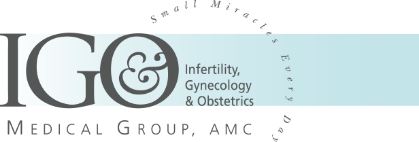Ovulation Induction
Drug‐induced ovulation induction is a technique used to attempt to achieve pregnancy by stimulating the ovary to a greater extent than occurs naturally. This is done by the use of various drugs. The purpose is to make available for fertilization several mature eggs in each cycle, instead of just one egg as would happen in a natural or unstimulated cycle. By having more than one egg available, there is a greater than usual chance of achieving at least one becoming fertilized via timed intercourse, insemination or in vitro fertilization. There is also, of course, a greater risk of having multiple pregnancies in any given cycle, since there are multiple eggs released.
Types of medication used during ovulation induction may include:
- Clomiphene Citrate (Clomid®, Serophene®): Blocks estrogen, the ovaries respond by making more follicles than normal in an effort to produce estrogen.
- Gonadotropin‐Releasing Hormone (GnRH) Analog (Lupron®, Synarel®): Suppresses ovaries,
blocks entire natural cycle. - Injectable Gonadotropin: Human Menopausal Gonadotropin (HMG) (Repronex®, Pergonal®,
Humegon®) Follicle Stimulating Hormone (FSH) (Gonal‐F®, Follistim®, Fertinex®): Directly stimulates ovaries and causes follicle maturation. - Human Chorionic Gonadotropin (HCG) (Novarel®, Profasi®, Pregnyl®): When eggs are mature,this injection mimics an LH surge to stimulate ovulation.
- Progesterone: By suppository or injection, maintains thickness of endometrium and supports early pregnancy.
